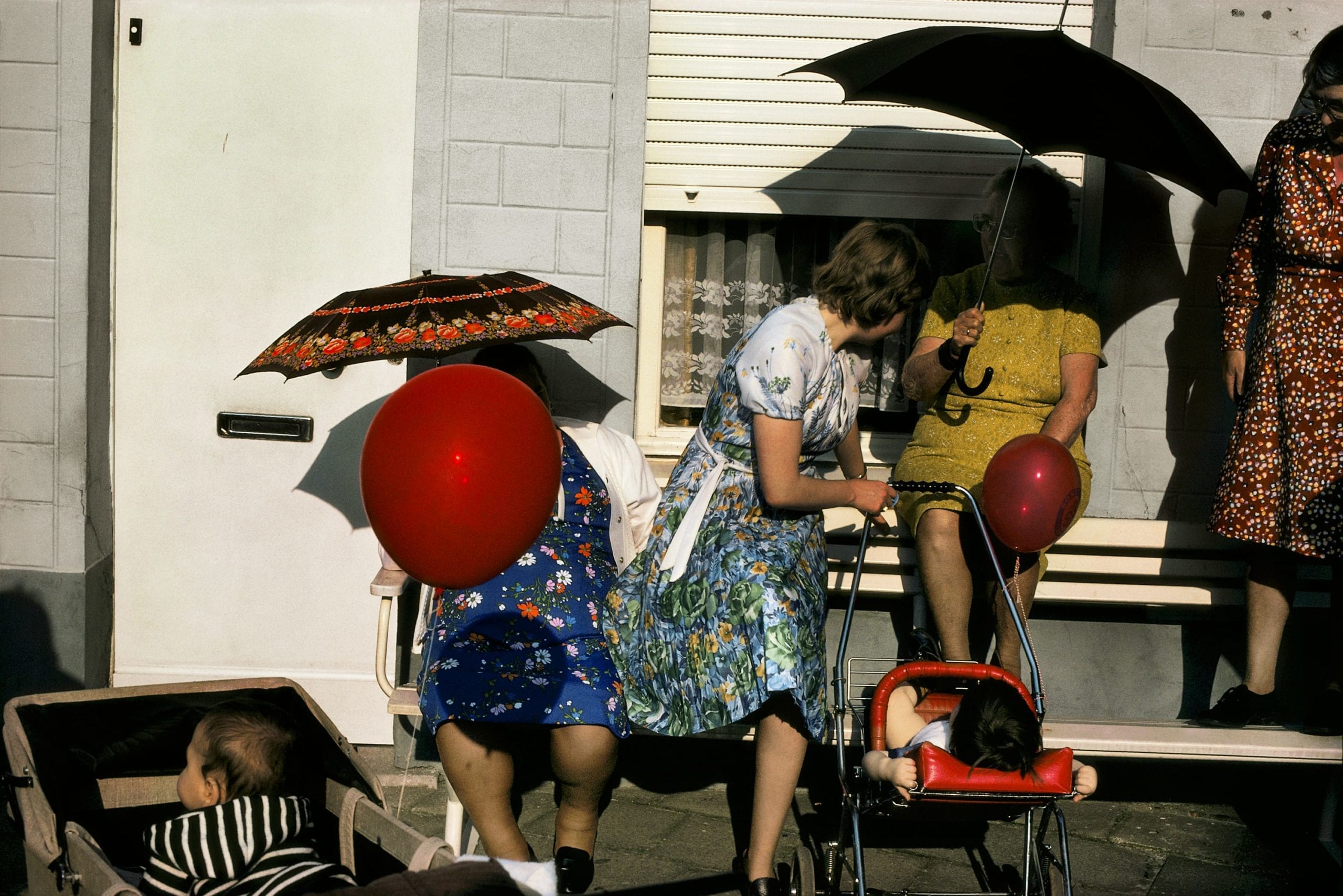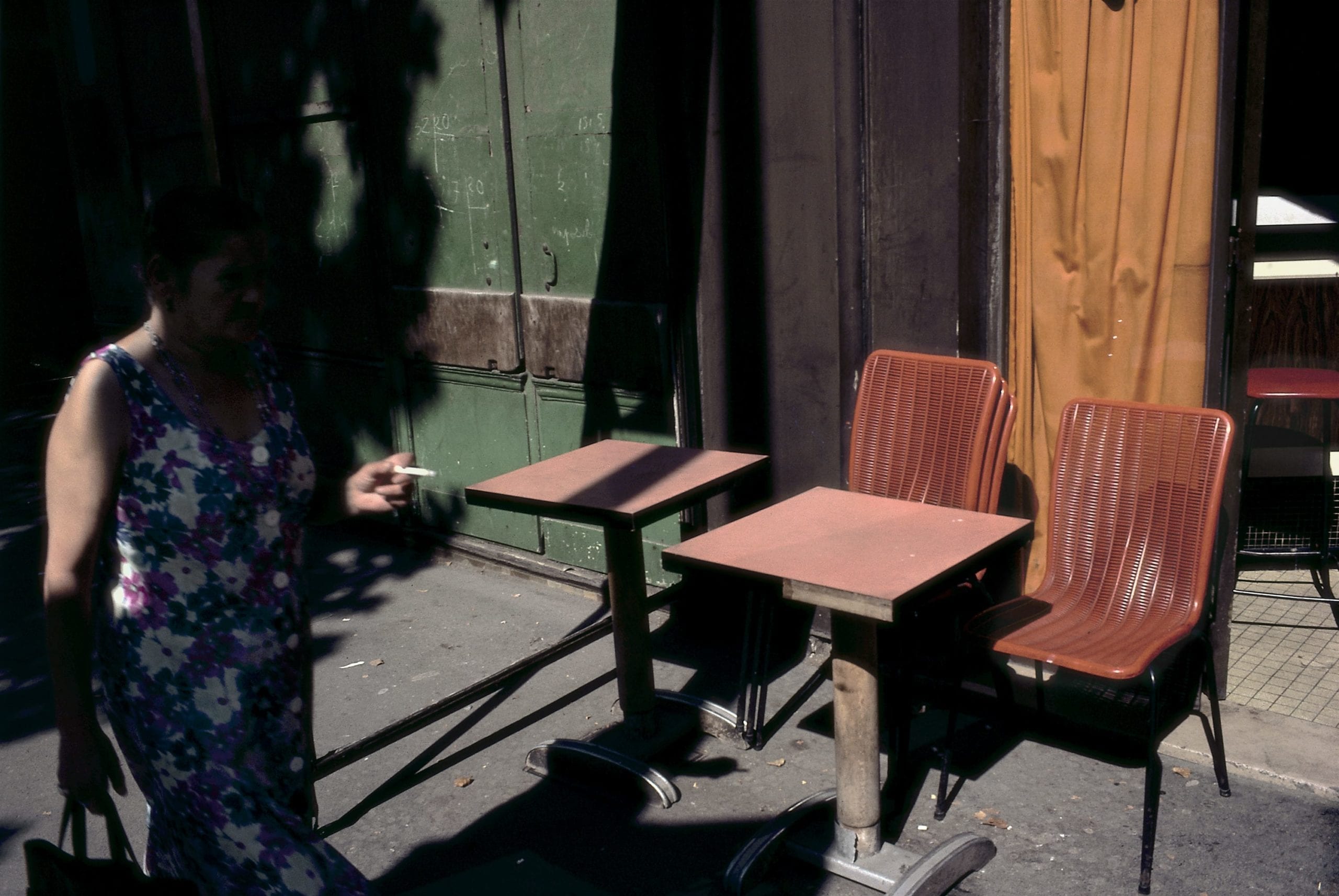
“On my first visit to the States in 1968 and discovering pop art was really important for me. It was completely new, and made me look at banality in a different way, not saying ‘this is bad taste’, [but] to do something with that, accept it and look at it with a sense of humour.”
The impact of pop art is clear — the book opens with TV Shots, his 1972 series photographing distorted TV images.
Living in London, Gruyaert created the series by turning the dial on a television set at random and photographing the distorted images he saw there.
Saturated hues and distorted faces create a nightmarish satire of media culture, and when first exhibited in 1974 caused controversy.
The images, his first serious work, are markedly different from the later work he is renowned for but provides clear context for his career. Despite it all, he struggles with the label of ‘artist’, at least publically. “I don’t know… it’s complicated. I’m saying I’m a photographer and if people think certain things are art, then yeah, sure.”

Gruyaert’s distaste for narrative, coupled with his enduring fascination for the banal, makes him a thoroughly unsentimental photographer. “It’s purely intuition. There’s no concept. things attract me and it works both ways. I’m fascinated by the miracle where things come together in a way where things make sense to me, so there’s very little thinking.”
“When I joined Magnum, I showed [my] pictures of Paris to Raymond Depardon. He said ‘that’s fascinating because you show the banality — the colours of the tables, the plastic of Paris’. It’s an aspect of Paris you don’t see in black-and-white; people are not attracted to that thing, they always want something going on. They want an anecdote.” After such a storied career, perhaps Gruyaert’s refusal to give people what they want is precisely the thing that makes them keep coming back to his work.
‘Harry Gruyaert’ is published by Thames and Hudson now. Details here.
